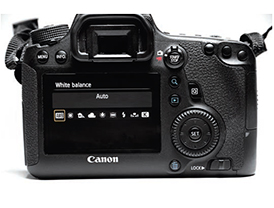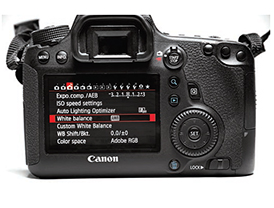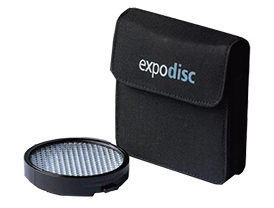Okay, I get it. But what is this Custom White Balance setting that I see on my camera?
Under difficult lighting conditions (example – mixed lighting), or when extra accuracy is desired, Custom White Balance (CWB) could be used. The method to set CWB may differ between makes/models of cameras. Please check your user manual.
For Canon cameras
a) Keep a white card or Kodak 18% grey card ready (The 18% grey card reflects equal amounts of red, green and blue). I suggest you set your camera to an ‘average’ exposure setting like f/8 and 1/60sec at ISO 100.
b) Take a frame-filling photo of the white card/18% grey card in the lighting for which you want to set the CWB.
c) Go to the Custom White Balance option in the Menu and press SET.
d) Press OK.
For Nikon cameras (On some Nikon cameras, the method is slightly different)
a) Keep a white card or Kodak 18% grey card ready. I suggest you set your camera to an ‘average’ exposure setting like f/8 and 1/60sec at ISO 100.
b) Along with the marked WB settings (Daylight, Shade, Cloudy, etc) on your camera, you will see letters PRE which stand for Preset Manual. Navigate to this PRE setting and press the WB button till PRE start to flash. Now point the camera to the white card/18% grey card, fill the frame, and take a shot When you do so, the picture will not be recorded, but the camera will record the colour of the light. This setting can be stored (please refer your user manual).
Note 1: PRE will flash only for 6 seconds. You must take the shot within this time. If PRE stops blinking, press the WB button again till PRE starts blinking and repeat the procedure.
Note 2: If the camera has achieved the correct WB, ‘Good’ will be displayed on the top LCD panel. If the camera fails to achieve the correct WB, ‘No good’ will be displayed. This could happen if you have set a very fast shutter speed and/or very narrow aperture set when starting the procedure. This is why I suggested the exposure mentioned earlier.
Note 3: If the lighting conditions change during your shoot, repeat the procedure for a new CWB, which can also be stored separately from the earlier CWB.
Note 4: If you do not store the CWB, the earlier CWB will be overridden by the new CWB.
About Mixed Lighting
Under mixed lighting, it can be a nightmare to achieve perfect colours. If the area in which you are photographing has varying coloured light sources, it is impossible to achieve correct WB for all the light sources at the same time. In such cases, decide on the most prominent light source, or the source that is covering the largest area of the room in question and proceed to acquire the correct WB for that source. Obviously, the areas lit with the remaining coloured lights will exhibit colour casts.


Is there any other way to set the WB?
Yes. If you know the Kelvin temperature of the light that is illuminating your subject, you can set the Kelvin temperature directly on your camera, if the camera has this feature. Light meters that read in degrees Kelvin are available, if needed.
You could also use a White Balance filter (like the ExpoDisc) to set accurate WB on your camera. After setting the camera for a Custom White Balance, hold the filter in front of the lens and point the lens to the light source and take a shot. The image will not be recorded, but the colour of the light will store the reading.
Note: Under strong sun, it is desirable not to point the lens at the sun. Take the reading nearest to the sun but without including the sun.
What exactly is Kelvin temperature?
Just as we have Celsius and Fahrenheit scales that measure temperature, the Kelvin temperature scale is used to measure the colour of light.
I don’t get it. How can you measure ‘colour’ of light?
Yes, this calls for some explanation (which I shall try to over-simplify). Let’s say that you have a cube of iron (which, in physics, is referred to as a ‘black body’) which you want to heat. As the iron heats, we see different colours in the heated iron. First it glows red, then orange, then yellow and then blue before it melts. The Kelvin scale provides a numerical value to each of those colours so that when you mention a particular Kelvin temperature, you know what the colour of the heated black body would be.
At 1500K, the colour emitted by the heated black body would be yellowish, which is compared to the yellow of a candle flame. At 5500K, the colour emitted by the heated black body would be similar to the colour we see at around noon. Between 9000 – 10,000K, the colour emitted by the black body would be similar to the colour of north blue sky.
So, the Kelvin scale allows us to compare the colours we see on a daily basis, to the colours that would be emitted by a heated black body at different temperatures.

I am curious to know what changes take place within the camera as you change the WB settings? Putting it another way, how does the camera change the WB?
To understand how the camera manages to get you accurate colours in spite of the light being coloured, try this out. Take a white LED torchlight and cover the front with a blue gel. If you put the switch ‘on’, the emitted light will be blue. Focus the light on a white paper and take a photo of that spot light. The spot will be blue. Now repeat the shot but this time place a yellow coloured filter on your camera lens. What happens? The blue and yellow light cancel out each other and the spot will no longer be blue (assuming that the correct density of the yellow filter is used).
A similar thing happens in a digital camera. Let’s say that you are photographing in a room lit by household bulbs (incandescent light). These bulbs emit yellow light and so your photos will have a yellow colour cast. When you set the camera’s WB to ‘incandescent’, the camera places a virtual blue filter on the lens (virtual, not physical) to counteract the yellow light of the bulbs, thus giving you a neutral image without any colour cast.
Important note: If you set the WB to ‘incandescent’ for example, the camera assumes that the light is yellow. But if the light is not really yellow, the camera has no way of knowing that. It will assume that it is yellow and will place a virtual blue filter in the light path, thus making your picture blue. This little trick could be used to your advantage if you want to create a moonlight effect during the day time.
Is there anything else that I need to know about the WB settings on my camera?
Yes. And this is very important. Generally, low Kelvin temperatures indicate ‘warm’ colours, while high Kelvin temperatures mean ‘cool’ colours. But on the camera, things are reversed. If you set your camera to a low Kelvin setting (say, 3000K), images will turn out ‘colder’ (blueish); setting the camera to a high Kelvin setting (say,7000K), images will turn out ‘warmer’.
Why is this so?
As explained earlier, to counteract the effect of coloured light, the digital camera uses a virtual filter of the opposite colour and density. Yellow-ish light (which is actually ‘low’ on the Kelvin scale) needs a blue filter (which is actually ‘high’ on the Kelvin scale) to counteract. Hence the camera is designed to apply the opposite filtration. |SP
CONCLUSION
I trust that the concept of White Balance is now clear. To re-cap, it is better to set your digital camera to the proper WB rather than leaving it on Auto WB. And this assumes greater importance if you are shooting in JPEG. This also lets you start your editing workflow with one less parameter to worry about. Remember, it is easier to add colours (for aesthetic reasons) but difficult to get rid of wrong colours. Get into the habit of doing things the right way. Happy Shooting!

